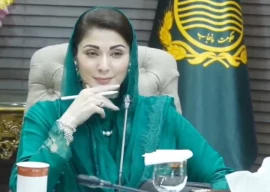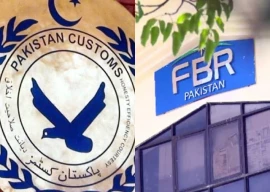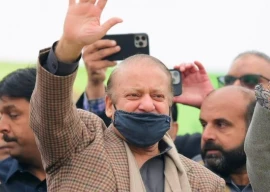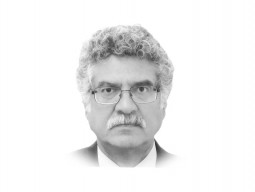
It is a million dollar question. For a long time the political will to grant Most Favoured Nation (MFN) status to India was not there. At that time, industrialists, traders and civil society activists advocated increasing trade with India, saying this would be a great way to forge better relations and solidify peace overtures between the two nations.
Now the political will is there, but industries and businesspersons are divided on the issue. Those in favour of MFN say that the quantum of trade between the two countries can be increased exponentially if this step is taken and the negative list – the list of items that cannot be traded between the two countries – is phased out. Currently the trade volume between India and Pakistan is about $2.5 billion and it is expected that this can be enhanced to $8 billion in the next two years.
It is, however, obvious that the bulk of this trade will be in favour of India. It is also obvious that this will not be just because India is a much bigger economy.
India has one of the most restrictive trade regimes in the world, according to the World Trade Organization (WTO). According the 2006 WTO annual report, in 2005-06, India initiated 191 safeguard actions compared to just 171 by China, a much larger economy. In fact, this was even higher than the number of actions initiated by the EU, also a much larger economic bloc.
And a new study conducted by the United States Agency for International Development (USAID) has revealed that India stands at the top in South Asian countries on the basis of trade restrictions imposed on neighbouring countries, according to criteria set by the World Bank. India is accused of using both tariff and non-tariff barriers to discourage imports from neighbouring countries.
It is no surprise, then, that trade between India and Pakistan is so skewed right now. The volume of trade is growing, but not in a way that seems to be of any real benefit to Pakistan. In 2006-07, Pakistan exported goods worth $342.9 million to India, against imports of $1.24 billion. In 2010-11, Pakistan’s exports to India had dropped to $264.3 million, while imports from India had surged to $1.74 billion.
The measure is more than likely going to go through this year. Trade with India is also going to grow, exponentially if this measure goes through, and still very fast even if it does not. There are benefits for both sides: Pakistan can target the huge retail market in India and also substitute cheaper imports with imports from India. The potential import items include tea, spices, auto parts, consumer and light engineering goods, tires and transport equipment, entertainment, healthcare, information technology, and pharmaceuticals. This can mean potential savings of up to $1bn for Pakistan.
On the other hand, Pakistan will have to be mindful of the pitfalls of allowing completely unfettered and unhindered imports from a much larger and much more developed economy. The USAID report suggests that Pakistan should actually enhance the sensitive list to protect the local industry and agriculture sector following granting MFN status to India.
This year will see some major shifts, with some local industries having to suck it up and see the end of their life inside the bubble of protectionism. This will bring benefits for the local consumer, who will have access to more choices and cheaper products.
But it will also bring in threats to other industries which do not have the same benefits, or are as developed as their counterparts in India.
Last, but not least, India will have to reciprocate tangibly in removing barriers to trade to provide an equal benefit to Pakistani exporters. Moving ahead on this measure, simply to please lobbyists who want liberalisation at all costs, could be fatal for Pakistan’s economy.
Published in The Express Tribune, January 7th, 2013.
Like Business on Facebook to stay informed and join in the conversation.
COMMENTS (19)
Comments are moderated and generally will be posted if they are on-topic and not abusive.
For more information, please see our Comments FAQ










































I like the way author has compared a very high number of 191 agains a very small number of 171, keep it up dude there are people who like this kind of logic.
i like they way author has compared a very high number of 191 agains a very small number of 171, keep it up dude there are people who like this kind of logic.
@Vlad Singh: They can't. YouTube is banned. :D
Mr. Author... your article is very misleading. A real clever way to build a case against India.
Why?
You take two instances of trade imbalance between India and Pakistan. Then you simply quote just one variable namely the number of tariff barriers that India raised. Then without an iota of proof, you continue the rest of your article on the "ASSUMPTION" that the trade imbalance was caused by the tariff barriers. What about other variables? What about the growth in industries in both the countries? What about the political and social situation in both the countries. What about the fiscal and monetary policies followed by both the countries during this time? There are so many other variables. However you only cherry pick those that suit your argument while conviniently ignoring others. In statistics and economics, this is called "Selection Bias". Very clever indeed. But many folks will see through this facetious argument.
Funny how the same principles which applies to India, also doubly applies to China, but till now not many have touched upon the subject.
China exports lot more things to Pakistan than India can ever hope to. Yet, the smaller challenge is noted with caution, the actual bigger adversary is totally ignored.
@Ghaznavi: lol...............god save you..what about karo-kari ,acid attacks and never reported rapes...not to mention................ no education :)
Mr Khurram Baig, would you please care to give us a link to this USAID report based on which you make multiple observations. Most authors making contentious statements would provide suitable links to buttress their observations to appear fair. MFN status means that same product from all countries are treated equally. Why should India/Pakistan remove barriers to trade ? Are these barriers India/Pakistan specific or applicable to all countries ? An honest answer to these questions would clear a lot of confusion raised by your article.
@Gratgy:
"India should withdraw MFN given to Pakistan and put up Pakistan specific trade barriers similar to the ones Pakistan puts up against India"
The best comment. Is somebody listening please? This one sided trade should end immediately.
@Ghaznavi: what about Pakistan where not only alive but dead women are also raped by retrieving their bodies from graves ? What about Pakistan where people cook and eat meat from dead bodies ? Need proof ? Go to YouTube.. Its really very easy to generalize incidents ..Take care of mess in your country before commenting on others
No point trading with a country where women are regularly gang raped and killed. Millions of female are killed every year, discriminated against and raped, all this while India is shining , and its trolls are booming. World's Largest Fascist Autocracy: INDIA
@Indian trolls: Clean the filth in your own home before finding fault in ours!
Let the consumers decide.
Who says that imports do not lead to growth? Cheaper and more efficiently produced imports may they be from India or else where can lead to growth. Pakistan's own exports according to SBP have over 60 percent imported content. On India being trade restrictive: What about Pakistan? Does Pakistan not give untargeted subsidies (hidden and non-hidden) to every possible sector. Is over 100 percent unchecked tax evasion in every productive sector of the economy not synonymous to subsidies?
Let's just first solve the issues. Let's not just sit and tolerate them Indians sending terrorists over in Baluchistan and KP while refusing to budge on Kashmir issue. India is definitely not my MFN and the same is true for millions of other Pakistanis.
The progress will be slow mainly because of the trust divide but the benefits to both countries stare us in the face the biggest benefit would be to the consumer on both sides .
World has become a Global Village & sooner we realize is better for us! Competition is always good for consumers. Average Pakistani would tremendiously benefit if PK gives MFN status to India!
What does the author show as his wisdom? A 2006 WTO annual report? Of course India will initiate more protective measures than China such as anti-dumping duty. How come Pakistanis let China dump their stuff? As long as it is not India's goods... huh?
India should withdraw MFN given to Pakistan and put up Pakistan specific trade barriers similar to the ones Pakistan puts up against India
The reason Pakistan trades with much bigger economic powers despite trade imbalance is due to those powers providing durable, advanced goods the country needs and the fact that powerhouses like the EU and USA and even China are far more opened and transparent. India, on the other hand, will mainly export stuff Pakistani manufacturers already make or replac cheap goods or raw materials. The Asian tigers you see today were too like Pakistan by protecting their infant industries during industrialization. Pakistan has to be cautious and take all stakeholders on board or wil face a disaster it's situation
I the only criteria is to look at the balance of trade, then we should not be trading with China or any other country except EU and US as we have deficit with all of them. Quoting selective parts of various reports such as the 2005 report of WTO is not relevant as situation on ground has changed radically. Indian imports are growing by 30-35 % each year. If its trade regime was restrictive, its trade should have stayed stagnant as happened in case of Pakistan. We should move on quickly. Pakistan has lost lot of time and it cannot afford to lose more.